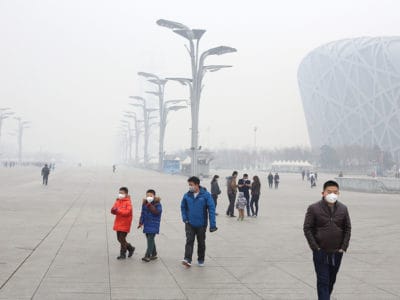Supporting better air quality management in China
China has issued stringent pollution control policies to improve its poor air quality. Despite initial success, the current measures will be insufficient to compensate the pressure from further economic growth and to bring air quality in compliance with national and international standards. Additional measures will be more costly and will need to involve a much wider range of economic sectors. In 2019, the Chinese Government officially adopted the IIASA GAINS model to strengthen air quality management in the country.

© Xi Zhang | Dreamstime
There is a long-standing tradition of cooperation between Chinese scientific institutions and IIASA on the topic of air quality management, especially on modeling the physical linkages between emission sources and air quality impacts. However, economic aspects have received less attention.
At request of the Chinese government, the World Bank established the ‘Pollution Management and Environmental Health’ (PMEH) program to enhance capacity for knowledge-based air quality management among the relevant policy institutions.
Within this program, IIASA hosted a delegation of Chinese policymakers in June 2019, where decision makers from several European countries shared their experience in the development of cost-effective policy responses for air quality management and discussed the importance of a systematic and robust science-policy dialogue.
Motivated by successful international experience with the application of the IIASA Greenhouse Gases – Air Pollution Interactions and Synergies (GAINS) model for the European air quality policy processes, the Chinese government has now adopted the IIASA GAINS model. IIASA installed the GAINS software at the Chinese Research Academy for Environmental Sciences (CRAES) in Beijing, the research branch of the China’s Ministry for Ecology and Environment (MOEE) and organized a series of training courses to facilitate policy analyses by the Chinese authorities.
Initial GAINS analyses for the Hebei province, conducted by Beihang University in cooperation with IIASA, clearly revealed a rather limited scope for further air quality improvements from the conventional emission control measures that are typically included in the current clean air action programs. Instead, attention must turn to other emission sources, in particular in the agricultural sector, which is an important source of precursor emissions for secondary fine particulate matter. This finding was taken up by the Hebei authorities as a main direction for the next Five Years Plan.





